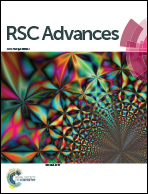VanadiumV(salen) catalysed synthesis of oxazolidinones from epoxides and isocyanates†
Abstract
The combination of a vanadiumV(salen) complex V+O(salen) EtOSO3− and tetrabutylammonium bromide forms a highly active catalyst system for the reaction between epoxides and isocyanates leading to oxazolidinones. The reaction conditions were optimized and the optimal conditions (80 °C in toluene for 5 hours with 2 mol% of vanadium catalyst and 2 mol% of tetrabutylammonium bromide cocatalyst) applied to eight epoxides and six aromatic isocyanates, giving 18 oxazolidinones with conversions of 34–98% and isolated chemical yields of the major regioisomer of 23–89%.


 Please wait while we load your content...
Please wait while we load your content...